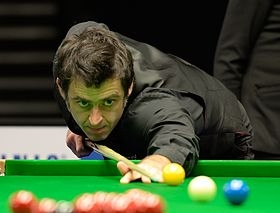
There are many things you need to think about before shooting someone in a mass shooting. It is crucial to know the types of injuries that may result from mass shootings and how to calculate the velocity of mass shots. This article will discuss the most important aspects to consider when determining the velocity for a mass shot.
Defining a mass shooting
There are many meanings to the term "mass shooting". In the United States, it refers to a large-scale, highly publicized, mass shooting. A mass shooting occurs when multiple gunmen enter public places and open fire, claiming many lives. This type event is often accompanied by the use of automatic weapons such assault rifles or shotguns.
According to the federal Bureau of Investigation, mass shooting refers to an incident that leaves multiple victims at one location and involves either guns or automatic weapons. These events can be random or symbolic in nature. There have been over 3,590 mass shootings in the 50 years. About a third of these incidents took place in schools or at work.

The definition of mass shootings is not always consistent and can vary from one study to the next. Incomplete or incomplete data sources can result in huge discrepancies when estimating mass shootings over the course of time. Also, news reports as well as other public documents may contain systemic bias. This makes it difficult to draw meaningful conclusions from such studies.
Mass shootings can cause injuries
Mass shooting injuries are a major threat to public health and should be taken into consideration in emergency plans. The CDC has a fact sheet that provides information about this topic. It also contains a checklist and guidelines. It also includes videos and other materials to help healthcare providers.
Six people are seriously injured in every mass shooting incident, according to the study. The costs for each event are detailed in the JAMA Open medical journal. It highlights the enormous financial and physical burdens that those who survive mass shootings face. The long-term implications of this trend are significant and are a matter of grave concern.
This report examined data from 34 mass-shooting incidents. They discovered that the majority of victims were black and male. The most common types of injuries were those to the neck and head. Approximately 6% of cases involved the use of tourniquets, and 16% of incidents involved dispatchers who failed to alert responders. According to the authors, victims were also more likely needing major blood transfusions.

Methods of determining mass velocity
A shot velocity measurement is one of the most important controls of a shot peening process. The traditional method, which relies on air pressure to measure the shot's velocity, is unreliable since it cannot adequately reflect the effects of shot peening. By coupling experiments and simulations, a more robust shot velocity measurement method has been developed. This method is able to quickly derive linear shot velocity formulas from impingement angles and surface roughness. The shot velocity formulas obtained can be used for prediction of shot peening effects in aerospace as also in automotive industries.
To accurately determine the shot’s velocity, the peening Angle and shot peening Pressure must be taken into account. The shot's velocity rises if the angle is less than 45 degrees. At 45 degrees, shot velocity increases to its highest point.